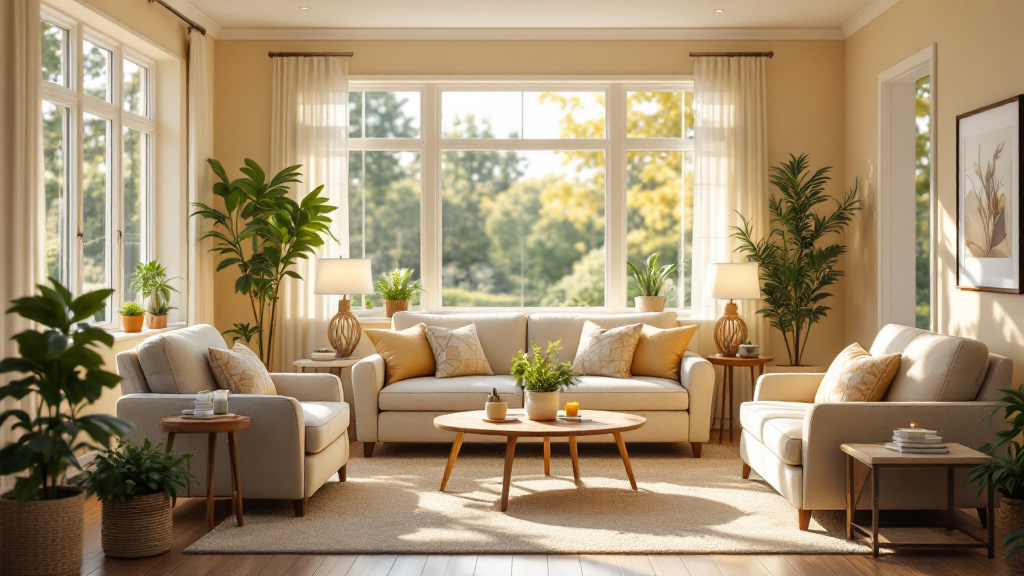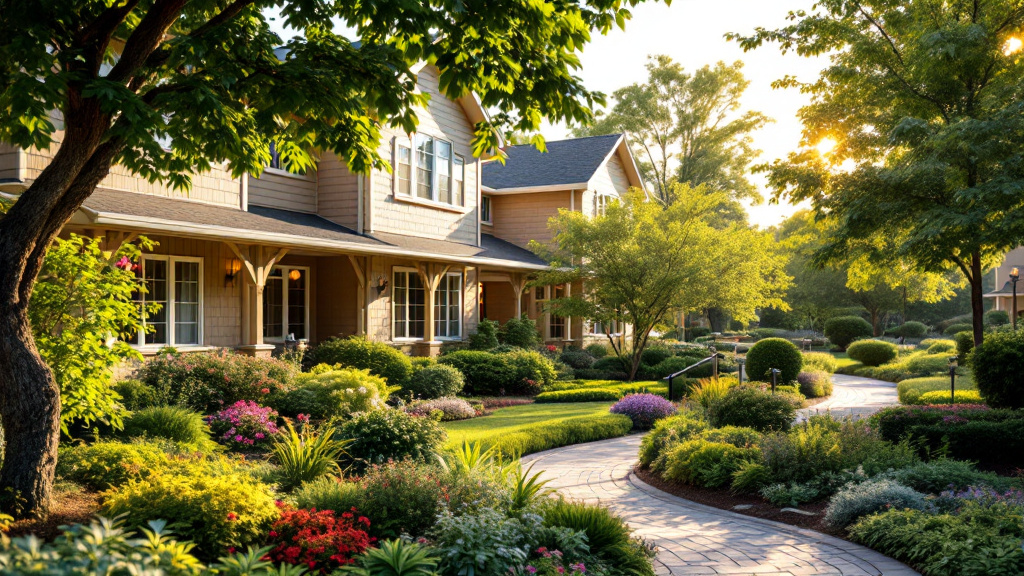Aging in Place

The Importance of Aging in Place
Aging in Place Definition
Aging in place refers to the ability of older adults to remain in their own homes while receiving the support they need as their health and care requirements change. This approach allows seniors to maintain their independence, dignity, and control over their living situation. Nearly 90% of seniors express a strong desire to stay in their homes as they age, highlighting the significance of facilitating this option [1].

Benefits for Seniors
The benefits of aging in place extend beyond merely residing in one's home. Staying in familiar surroundings can significantly enhance aspects of life for older adults. These advantages can include:
BenefitDescriptionEnhanced Well-BeingSeniors who age in place often experience increased life satisfaction, as they can maintain routines and relationships in a familiar environment.Improved Health OutcomesRemaining in a known setting can lead to better health and wellness by minimizing stress and promoting mental health.Access to Community SupportOlder adults have the chance to engage with their community, which can include volunteer opportunities. They often volunteer more than any other age group, sharing their wealth of knowledge and experiences.Cost-Effective SolutionsAging in place can be more affordable than transitioning to assisted living or nursing homes, allowing seniors to manage their finances better and allocate funds towards necessary modifications or healthcare services.
Supporting aging in place preferences contributes positively to the entire community. It allows seniors to take part in community life actively, fostering intergenerational connections and enriching the experiences of individuals of all ages.
For a deeper understanding of the benefits and resources associated with aging in place, check out our page on benefits of aging in place.
Barriers to Aging in Place
As the population ages, understanding the barriers that hinder effective aging in place becomes increasingly important. For many older adults, several significant factors can complicate their ability to remain independent and secure in their own homes.
Housing Challenges
The availability of safe, affordable housing is a major barrier for older adults wishing to age in place. Many homes are not modified to support the independence, safety, and accessibility required by seniors. Adjustments such as grab bars, ramps, and widened doorways often come with costs that may be prohibitive for some families.
ChallengeDescriptionSafety ModificationsMany homes lack necessary changes to accommodate walkers or wheelchairs.AffordabilityThe costs of renovations can be a significant financial burden.
Social Isolation
Social isolation and loneliness pose significant barriers to aging in place. Research indicates that isolated seniors are at increased health risks and have a higher likelihood of experiencing homecare failure, which adversely affects their ability to live independently [2].
The table below highlights some important factors related to social isolation among seniors:
FactorDescriptionPrevalence of IsolationMany seniors experience social disconnection, particularly those who are homebound.Health RisksIncreased feelings of loneliness can lead to various health issues, including depression and anxiety.
Transportation Issues
Transportation access is another common obstacle for older adults wanting to remain in their own homes. The lack of reliable transportation can prevent seniors from accessing essential services, such as medical care, nutritious food, and community support. This issue is particularly pronounced in rural areas, where public transportation options may be limited.
Transportation ChallengeImpact on SeniorsLimited Public TransitDifficulty in accessing needed services and social activities.Reliance on Family/FriendsCan place a burden on family caregivers and limit seniors' independence.
Addressing these barriers requires multi-faceted solutions, including community support resources like senior advocacy and programs aimed at senior safety. By confronting these challenges, it is possible to foster environments where aging in place is not only a goal but a reality for many older adults.
Demographic Trends
Understanding demographic trends is essential for grasping the importance of aging in place. The growing number of older adults and their preferences significantly influence the landscape of senior care.
Aging Population Growth
The aging population in the United States is experiencing rapid growth. By 2060, the number of adults aged 65 and older is projected to reach 96 million, an increase of 43 million from 2018. Furthermore, the population of adults aged 85 and older is expected to rise from 6.7 million to 19 million within the same time frame, marking an increase of 12.3 million [2].
Age Group2018 Population (millions)Projected 2060 Population (millions)Increase (millions)65 and older53964385 and older6.71912.3
This demographic shift underscores the increasing need for resources and support structures to enable seniors to live independently.
Preferences of Older Adults
The preferences of older adults regarding their living situations have also evolved. As of August 2022, 77% of Americans over the age of 50 expressed a desire to age in place rather than moving to assisted living facilities. Although the costs of in-home care can be approximately 10.2% higher than assisted living, many still prioritize staying in their own homes.
Approximately 27% of U.S. adults aged 60 and older lived alone in 2020, a figure expected to rise alongside the aging baby boomer generation [4]. As the number of older adults increases, so does the percentage of those choosing to live independently, particularly among those in their 80s and 90s [5].
These trends highlight the need for appropriate support and modifications to help seniors remain in their homes safely and comfortably. For more insights into the benefits of aging in place, explore the additional resources available.
Financial Considerations
Financial Insecurity
Financial issues are a significant concern for older adults wishing to maintain independence by aging in place. According to the Merck Manual, nearly 22 million Americans aged 60 and older experience financial insecurity. This insecurity can severely impact their ability to access essential resources and services needed for safe living conditions.
Older adults often face higher healthcare costs, alongside expenses related to home maintenance and modifications. The average cost of in-home care is notably 10.2% more expensive than assisted living. The following table outlines some of the common expenses faced by seniors aging in place:
Expense CategoryAverage Monthly CostIn-home care services$4,500 - $5,000Home modifications$5,000 - $15,000Utilities$200 - $400Medical expensesVaries widely
Impact on Access to Resources
The financial hurdles faced by seniors can limit their access to crucial resources necessary for quality care and safety. Aging in place offers the advantage of familiar surroundings; however, to maintain this independence, financial resources are paramount. Without adequate funding, older adults may struggle to secure necessary home modifications or assistive devices that facilitate daily activities.
For many seniors, the inability to afford in-home care leads to increased reliance on family members or friends for support. This can sometimes result in social isolation, further stressing financial resources when help may not be readily available.
Community support systems such as adult day care centers near me and senior advocacy programs can provide essential support, but these services often come at a financial cost. It's vital for seniors to explore options, including senior volunteer opportunities, which not only promote engagement but may also provide financial benefits or resources to offset the costs of aging in place.
Ultimately, addressing the financial challenges surrounding aging in place is critical for ensuring that seniors can access the benefits associated with remaining in their own homes. This approach not only promotes individual health and wellness but also strengthens the broader community as seniors continue to contribute their wisdom and experience. For more information on maintaining a safe environment, visit our article on senior safety.
Home Modifications for Aging in Place
Making appropriate modifications to the home can significantly enhance safety and comfort for seniors who wish to age in place. This section highlights essential modifications for bathroom safety, kitchen accessibility, and other specialized adaptations.
Bathroom Safety
The bathroom is a critical area where many falls occur among older adults. To minimize the risk of accidents, several modifications can be implemented. Key recommendations include:
ModificationDescriptionNon-slip DecalsPlacing non-slip decals on the floor and inside the shower to enhance grip.Shower BenchInstalling a shower bench to allow seniors to sit while bathing, reducing the risk of falls.Grab BarsAdding grab bars near the toilet and sink for additional support and stability.Raised Toilet SeatUsing a raised toilet seat to make it easier for seniors to sit down and stand up.
These enhancements not only improve safety but also promote independence for seniors as they navigate daily activities.
Kitchen Accessibility
Ensuring that the kitchen is accessible and safe for seniors is essential for maintaining their independence. Important modifications include:
ModificationDescriptionAccessible CabinetsLowering cabinet heights or using pull-out shelves to make items easier to reach without excessive bending.Anti-slip FlooringInstalling anti-slip flooring to prevent falls, especially when floors are wet.HandrailsAdding handrails along countertops to provide support while moving around the kitchen.Voice-Activated DevicesIncorporating smart home technology that allows voice-activated controls for appliances, enhancing usability for seniors with mobility challenges.
These adjustments not only support safer cooking and meal preparation but also empower seniors to engage in daily activities effectively.
Specialized Modifications
Beyond bathroom and kitchen adaptations, there are additional specialized modifications that can enhance the living space for older adults:
ModificationDescriptionRampsInstalling ramps can eliminate the need for stairs for those using wheelchairs, making the home accessible without needing to transition to a facility [3].HandrailsInstalling handrails in stairwells, along hallways, and at exits to provide extra support while moving between rooms [3].Emergency Alert SystemsImplementing emergency alert systems that allow seniors to summon help if needed, further enhancing their sense of security.
These specialized modifications play a crucial role in ensuring that seniors can maintain their quality of life while aging in place, facilitating independence and safety within their homes.
Managing Home Maintenance
Maintaining a home can present several challenges for older adults. As age-related declines in capabilities become more pronounced, the ability to manage home maintenance tasks can diminish, impacting the overall success of aging in place.
Difficult Tasks
Older adults often report that certain home maintenance activities are particularly difficult for them. Key areas of concern include:
These difficulties can threaten the ability to remain in one's own home comfortably and safely.
Task TypePercentage of DifficultyCleaning70%Outdoor Maintenance15%Home Repairs15%
Solutions for Independent Living
To address these challenges, older adults often seek various solutions. Findings indicate that nearly 85% of responses from seniors concerning home maintenance difficulties were person-related. Significant options include:
Person-related solutions, particularly outsourcing, were more commonly mentioned by women, while men tended to suggest environment-related solutions, such as relocating to a condominium or apartment. Addressing the practical aspects of home maintenance through these various approaches is vital for enabling seniors to age in place comfortably.
For more on ensuring safety and well-being at home, check out senior safety and senior wellness resources.
References
[2]:
[3]:
[4]:
[5]:
[6]:




































.jpg)








.jpg)





.jpg)
.jpg)
.jpg)
.jpg)
.jpg)
.jpg)
.jpg)
.jpg)



.jpg)

.jpg)
.jpg)
.jpg)
.jpg)


.jpg)
.jpg)
.jpg)
.jpg)

.jpg)
.jpg)
.jpg)


.jpg)
.jpg)










.jpg)




.jpg)
.jpg)

